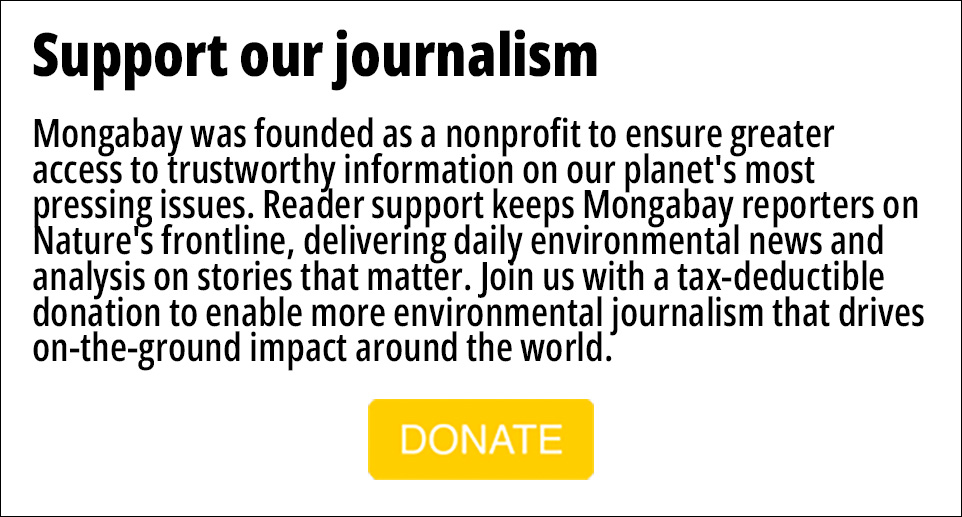- Scientists and conservationists have long argued that we undervalue the “services” provided by healthy, functioning ecosystems — things like clean water, healthy habitat for wildlife and a stable global climate.
- Emerging markets for payments for ecosystem services are a sign that some progress is being made toward finding solutions.
- “A basic understanding of the biophysical processes that drive ecosystems will help policy makers and managers better understand and appreciate the benefits provided by natural areas,” the report authors write.
Decisions about land use will become increasingly crucial — and contentious, most likely — as the global population climbs from 7.2 billion to a projected 9.6 billion by 2050.
Global hunger, resource scarcity and climate change are among a number of signs that we could be coming close to reaching Earth’s carrying capacity — at least if we keep living the way we live now.
As the full consequences of our pump-and-dump, slash-and-burn economy continue to manifest over the next century, no challenge we’ll face will be more pressing than how to ensure an adequate supply of clean drinking water for everyone.
With that in mind, the Panama City-based Smithsonian Tropical Research Institute (STRI) and the Washington, D.C.-based Inter-American Development Bank have published a downloadable toolkit to help policy makers in the tropics weigh their options when determining how best to manage forested watersheds.
Scientists and conservationists have long argued that we undervalue the “services” provided by healthy, functioning ecosystems — things like clean water, healthy habitat for wildlife and the carbon kept out of our atmosphere by trees, plants and soil.
“Clean water is fundamental to almost all of the benefits that humans receive from forested watersheds,” said Matthew C. Larsen, a hydrologist and director of STRI. “In addition to sustaining healthy forests, water sustains public irrigation and drinking-water supplies, complex tropical ecosystems, biodiversity and ecotourism.”

Though market-based initiatives are unlikely to represent a solution in and of themselves, the fact that markets for payments for ecosystem services are being created around the world to help protect biodiversity, forest carbon stocks, water sources and a variety of the other gifts bestowed on us by nature is a good sign that we’re making progress.
Many payments for ecosystem services schemes are intended to be part of the UN’s Reducing Emissions from Deforestation and forest Degradation (REDD+) program, which is meant to channel international financing from rich countries to poorer countries to help them cope with the impacts of global warming and develop their economies in a sustainable manner.
In other words, government officials around the world are finally getting serious about finding ways to protect the many benefits of healthy ecosystems. The problem is, they don’t always have access to all of the information they need to properly assess the tradeoffs between ecosystem services like the provision of clean water and, say, granting a timber concession, or allowing other development projects that compromise ecosystem health.
That’s why the authors of the new report from STRI sought to provide a set of guiding principles for sustainable watershed management, targeted at policy makers at all levels of government but also written so as to be accessible to anyone who wants to engage with these issues.
The STRI report features new data on watershed management, outlines advances in management policies and provides an overview of socioeconomic factors that jeopardize our ability to manage watersheds for everyone’s benefit.
“This ‘Watershed White Paper’ summarizes the latest science and highlights the importance of integrated watershed management to meet the challenges of meeting the needs of billions of people who depend on food, timber and clean water in the tropics and in our globalized economy,” Jefferson Hall, STRI staff scientist and lead editor of the paper, said in a statement.
The report, which is free to download, includes five case studies of watershed management initiatives across Latin America and links to several others, including many so-called “water funds,” systems of payments for ecosystem services in which the beneficiaries of the service contribute to a trust fund to support stewardship of the source of their clean water.
“A basic understanding of the biophysical processes that drive ecosystems will help policy makers and managers better understand and appreciate the benefits provided by natural areas,” the report authors write, “as well as understand the trade-offs inherent to the tough decisions required to ensure human well-being in an era of global change.”
CITATION
- Hall, J. S., Kirn, V., & Fernández E. Y. (editors). 2015. Managing watersheds for ecosystem services in the steepland Neotropics. Smithsonian Tropical Research Institute/Inter-American Development Bank: Panama City, Panama. doi.org/10.18235/0000163#sthash.hFLgv9dJ.dpuf







